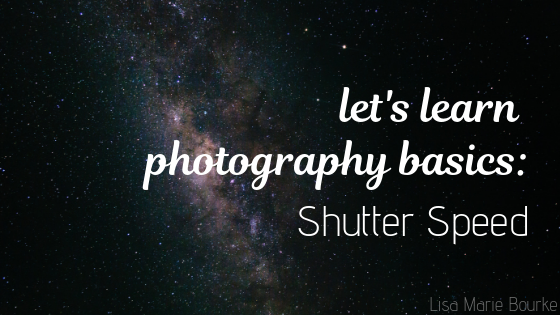This week we are continuing our series on the pillars of photography. These are the principles that are crucial for you to recognize as you enter the world of amateur or professional photography. Often these settings can only be changed if you have a DSLR camera body versus the standard point and shoot variety. If you are interested in learning more about this type of camera, check out my post on camera bodies. Let’s get into it.
Previously, we talked about the first two pillars of taking wonderful pictures: aperture and ISO. As a brief review, aperture refers to the hole in a camera lens that lets light in. Depending on your settings, this “pupil” of the lens will be wider or narrower. The more narrow the opening, the less light is able to enter the lens but the more the background will be blurred; the wider the opening, the more light the camera will be able to take in and the less blur there will be in the background. This intake of light affects what is called the exposure of a photo.
We also learned that ISO is a more unnatural way of boosting the brightness of your photo. We made the distinction between brightness and exposure, with exposure being more natural and brightness being less natural. ISO can help you take a bright picture in a poorly-lit indoor space, but you do risk the quality of the image as a whole.
This post we are going to talk about shutter speed. The shutter speed of your camera is another way that you can control the exposure (notice that I didn’t say brightness) of your image. This setting controls how fast the camera’s shutter will open to let the light and picture in. Shutter speed is measured in fractions of a second; for example, a fast shutter speed would be 1/200,000 and a slow one would be 1/4.
Setting the speed of your shutter will depend heavily on the external factors of your photo shoot and the other settings that we have talked about. There are also some fun effects that you can achieve with a long shutter speed that we will talk about later on in this post. If you are doing your photos in a sunny field, you can stand to have your shutter speed set very high (resulting in a fast opening and closure). This is because you will not need much time for the lens to take in a good amount of light.
If you are wanting to get a successful photo of the night sky, however, you will need to set your shutter speed to longer opening time. You need to do this because you want the camera to be able to take all the light that it can to provide the most stunning image. Leaving a shutter open for this long, however, will have some side effects. The most prevalent would be that setting a high shutter speed for a handheld picture will result in a very blurry photo. The blurriness comes from the fact that the camera has the time to track any movement you make (which is why this isn’t a problem with high shutter speeds).
If you want to achieve a great photo of the night sky, the northern lights, or even to get the milky effect that water can have, you not only need to set the camera to a low shutter speed but you will need to use a tripod and a hand-held shutter release. The less you touch the camera the better.
Shutter speed, aperture, and ISO all work together very well. If you are comfortable setting all of these settings yourself, you will be able to achieve some great images, leveraging higher shutter speeds for lower apertures and vice versa. But if you are not quite comfortable tackling this yourself, your camera comes prebuilt with some helpful settings that we will talk about in my next post.
